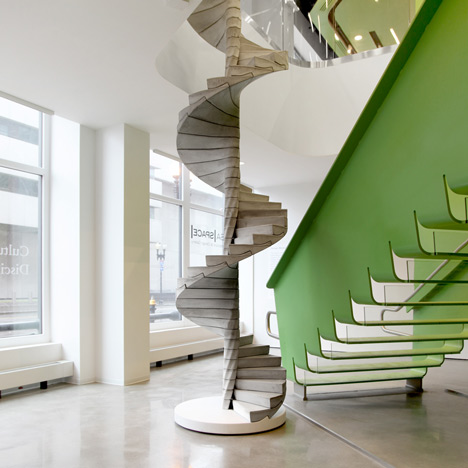
Helix Staircase by Matter Design
This half-scale model of a spiral staircase by American studio Matter Design is made from concrete treads that slip neatly over each other.
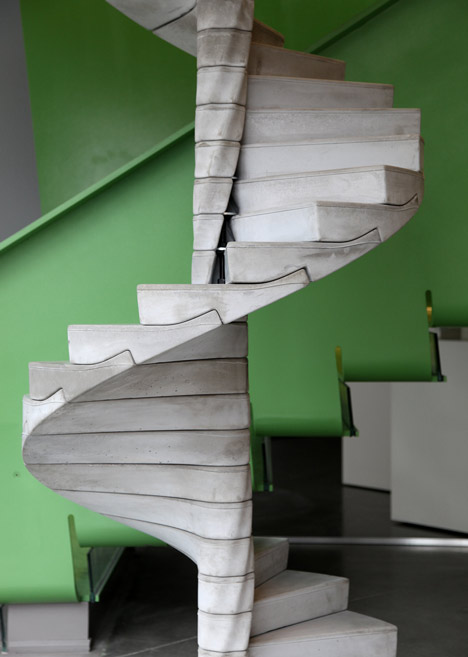
Above and top: photograph by Brandon Clifford
The Helix staircase by Matter Design was built at a reduced size to make it easier for the designers to experiment with heavy concrete modules.
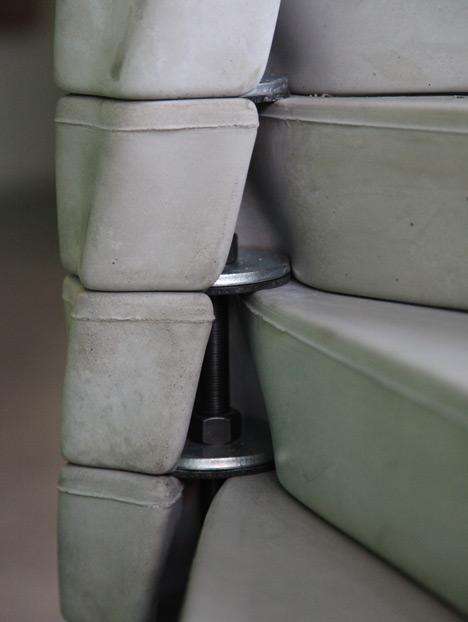
The staircase also "celebrates its impracticality" at a smaller size, said designers Brandon Clifford and Wes McGee: "It is both column and stair, yet hangs from the ceiling. Its uncertainty and changed scale inject playful characteristics into the surrounding space, while maintaining an allegiance to the past and known."
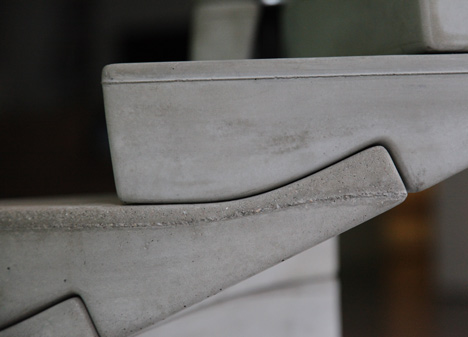
The treads were cast in a rubber mould clamped down by a carved wood mother-mould and then steamed for 12 hours to cure.
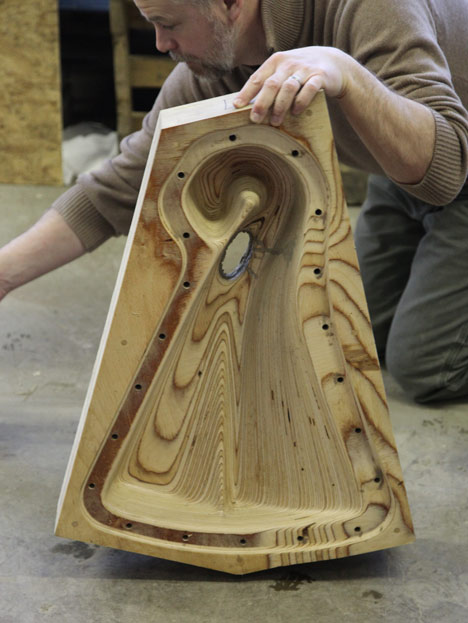
To build the staircase, each tread was hooked over a vertical rod and slotted against the tread below before being bolted down.
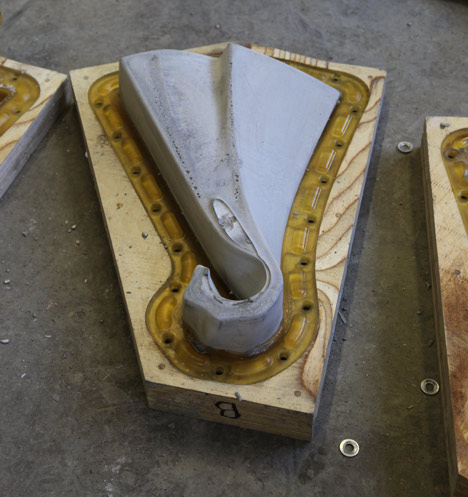
The design is on show until 15 May next to another staircase inside BSA Space, home of the Boston Society of Architects, as part of this year's Design Biennial Boston.

We've featured a couple of concepts for spiral staircases recently, including one based on a whale's backbone and another with fibreglass steps – see all staircases.
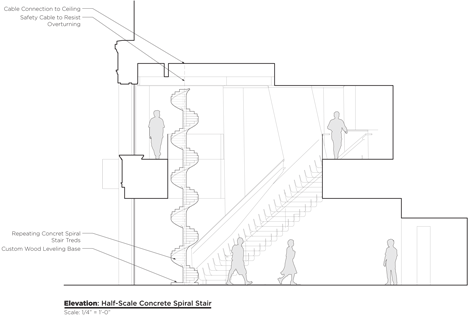
Other indoor uses for concrete include a lamp with a magnetic concrete base and a lamp shaped like a military listening device – see all concrete design.
Photographs are courtesy of Matter Design except where stated.
Here's some more information from the designers:
Matter Design has announced the release of Helix as part of the Design Biennial Boston 2012 Exhibition at the Boston Society of Architects Space. This project is part of Matter Design’s research trajectory towards a contemporary stone architecture. Brandon Clifford and Wes McGee’s participation in this year’s Design Biennial Boston made this project possible.
As Clifford and McGee explain: "We have a pre-occupation with the translation of ancient and often lost methods into contemporary culture and practice. Helix is a product of an ongoing research agenda that centres on volume as an area of architectural exploration."
Helix is a half-scale spiral stair. While this reduced size resolves a number of practical concerns —weight, liability, access — the piece celebrates its impracticality. It is both column and stair, yet hangs from the ceiling. Its uncertainty and changed scale inject playful characteristics into the surrounding space, while maintaining an allegiance to the past and known.
A second preoccupation of Clifford and McGee is what they term "plastic rhetoric". The solid, heavy and volumetric action of casting concrete transforms a liquid matter into a solid mass that wants to crack. The stair's rounded, plastic and curvaceous treads reflect the material's earlier liquid state. Its twisting accelerates as it wraps around the support column, appearing to re-plasticise the figure. The entire construct's organic and malleable appearance is counterintuitive in light of the zero-tolerance system of nesting and keying from unit to unit.

On Material and Fabrication
The stair is produced with precast unreinforced concrete. These treads are unreinforced to test some claims as the team move closer and closer to stone as a testing material. Unreinforced concrete has little to no tensile capacity making this project a structural prototype in collaboration with Matthew Johnson of Simpson Gumpertz & Heger. Each tread is cast in a fully encapsulated custom mould. These moulds are rubber with a solid wood mother-mould to clamp the assembly together. The moulds are vibrated rigorously during the pouring process and then immediately steamed for twelve hours to cure.
On Methods of Making
The entire stair assembly hangs from a beam two storeys tall. This beam then drops down a threaded rod to a base that serves as a pendulum balance. Each tread is designed to hook over this threaded rod and be bolted down to its neighbour below. The geometry of these treads lock into each other with a series of three-dimensional keys that reduce any shear or slipping between units. Typically a stone spiral stair is held from the perimeter. In this case, the stair is compressed in the column to ensure stability.
Credits: Brandon Clifford & Wes McGee — Matter Design
Structural: Matthew Johnson—Simpson Gumpertz & Heger
Project Team: Aaron Willette, Austin Smith, Christopher Miller, Daniel Clark, Edrie Ortega, Elizabeth Galvez, Enas AlKuhdairy, Johanna Lobdell, Justin Gallagher, Lina Kara’in, Luisel Zayas, Matthew Sherman, Patrick Little, Rebecca Priebe, Sixto Cordero
Acknowledgements: Fabrication support by the University of Michigan TCAUP FABLab and Simpson Gumpertz & Heger. Material donations by Boston Sand and Gravel (Aggregate and Additives), Lehigh Northeast Cement Company (Type III Cement), and Headwaters Resources, Inc. (Fly Ash)